This dynamo, connected directly to a high-speed steam engine, was one of six that produced direct current at Thomas A. Edison's electric power station at 257 Pearl Street in New York City. The Pearl Street Station was the prototype for central station power generation. Edison set out in 1878 to provide an electrical distribution system to bring lighting into the home: His first filament lamp lit on October 21, 1879. With the help of Frances Upton and C.L. Clarke, Edison built his engine-driven dynamo for the 1881 Paris Electrical Exposition.
Electric
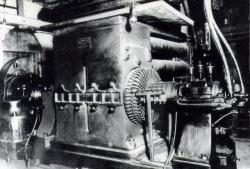
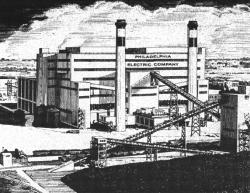
Operated by the Philadelphia Electric Company (PECO), now known as Exelon Corp., Eddystone Station Unit #1 is a 325 MW pulverized-coal-fired plant that pushed the technology of steam-electric generating plants. When built in 1960, engineers sought to make a more efficient plant using higher temperatures and pressures and larger machines. Previous experience at Philo 6 (Zanesville, Ohio, 1957) had demonstrated supercritical steam plants would work, so engineers pushed beyond that frontier to even larger machines and efficiencies.
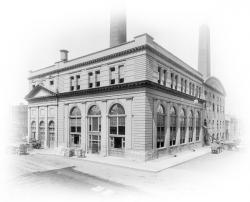
Wisconsin Historical Society Image Caption: East Wells Onieda Street Power Plant Era_date_from: 1918
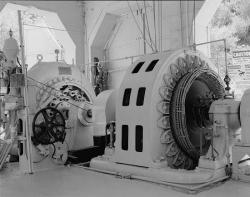

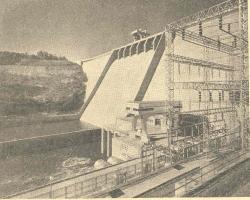
The integration of pump and turbine was the first of many to be installed in power-plant systems in the United States. It was the largest and most powerful in the world. As a "pump storage" unit in the Tennessee Valley Authority's system, it effected significant economies in the generation of electrical energy. The unit was designed by engineers of the Tennessee Valley Authority and the Allis-Chalmers Company. It was built by Allis-Chalmers.
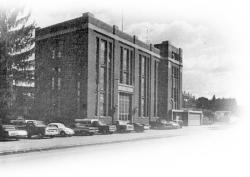
The Connecticut Light & Power Company pioneered the use of pumped storage in the United States at this hydroelectric station. First operated in 1929, the Rocky River Plant had two reversible pumps that somewhat resemble large hydroelectric turbines. This permitted significant improvements in the system efficiency of the company's network of hydroelectric and thermal-electric power generating plants. Water is pumped uphill through a penstock and stored in Lake Candlewood.
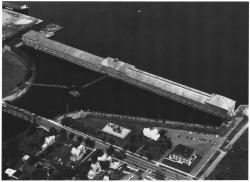
This low-head operating plant is representative of nineteenth-century hydropower-plant practice using many small turbines in contrast to twentieth-century use of few large turbines and generators. Its 40,000 horsepower capacity made it the largest in the country using turbines of American design (McCormick-Francis). The contemporary and larger Niagara installation used turbines of French design (Fourneyron). The entrepreneur of this plant was Francis Clergue, a lawyer, who employed as his chief engineer Hans A.E. von Schon, a German immigrant who had served with the U.S.
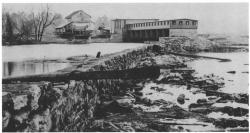
This run-of-the-river plant is a typical example of late nineteenth-century small-scale (750 kilowatt) low-head hydroelectric power technology. The Fries Manufacturing and Power Company began operating the Idol's Station on April 18, 1898, making it the first commercial hydroelectric plant in North Carolina involving long-distance power transmission, fourteen-miles distance at 10,000 volts. Idol's was an important power source for transportation, lighting, and industry in the Winston-Salem area.
This machine, which began operation on December 15, 1891, for the New York Edison Illuminating Company, represents the beginning of large-scale electric power generation in the United States. The generator was designed by chief engineer John Van Vleck, David Joy (known in England for his valve gear), and S. F. Prest.


